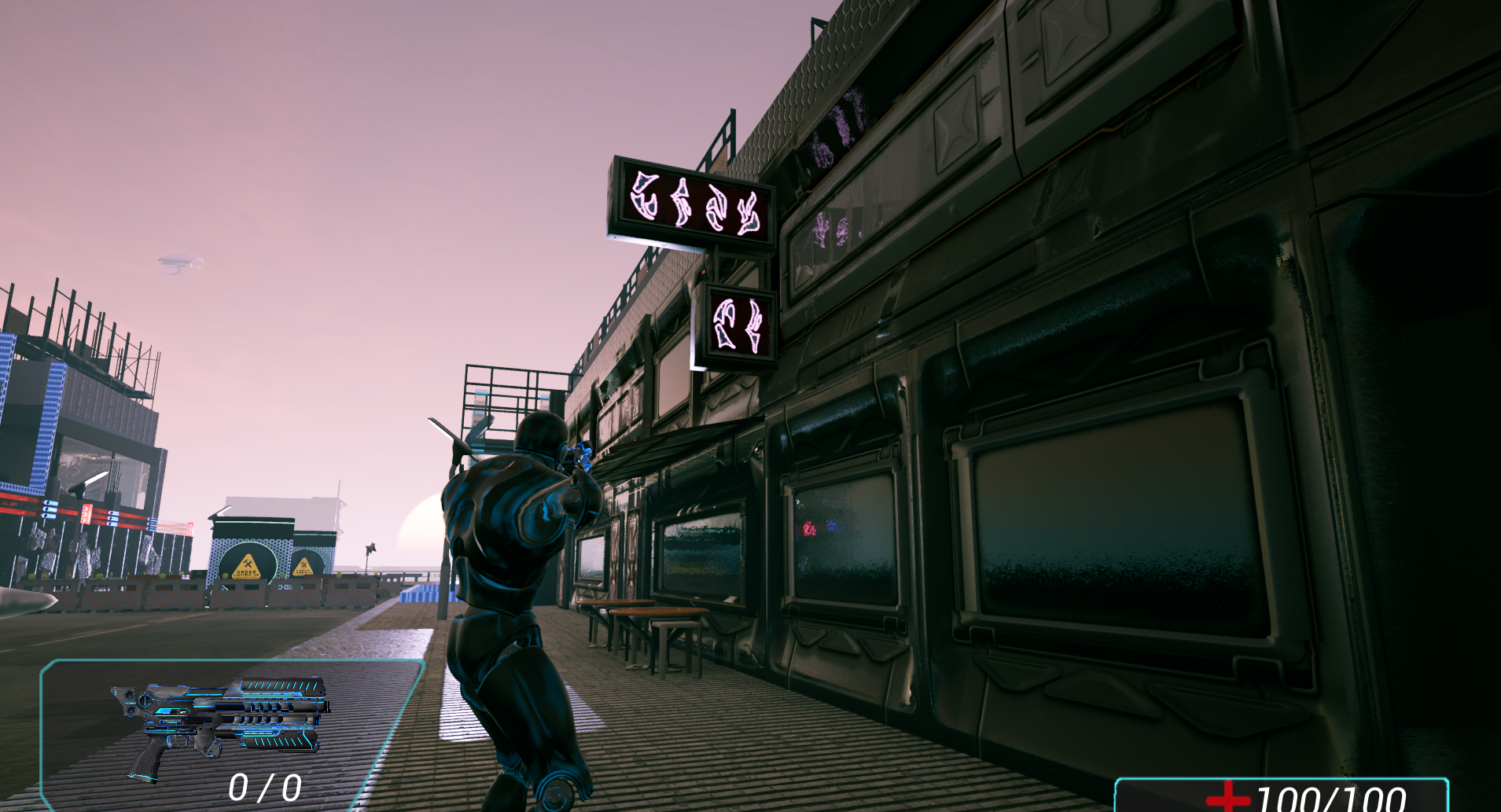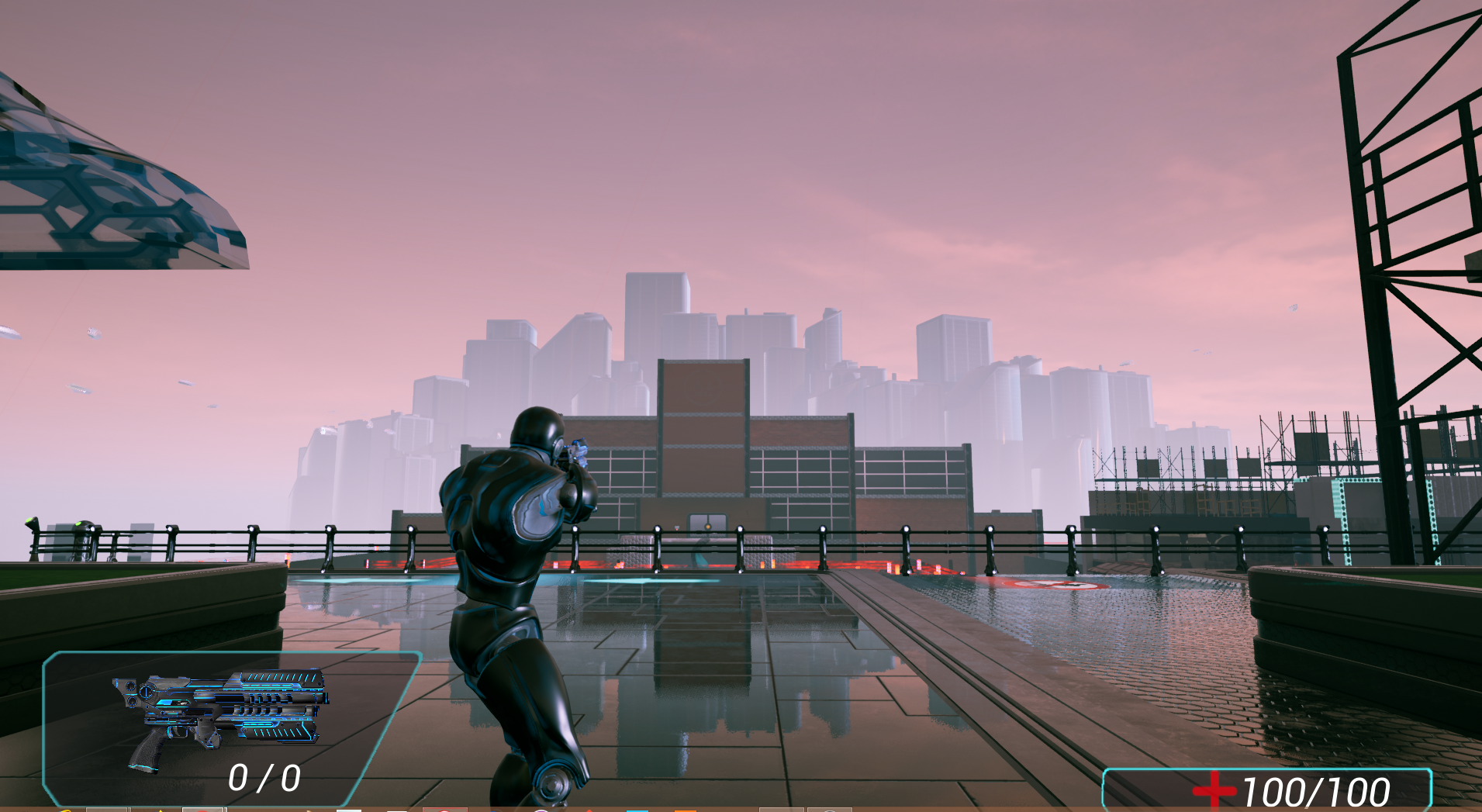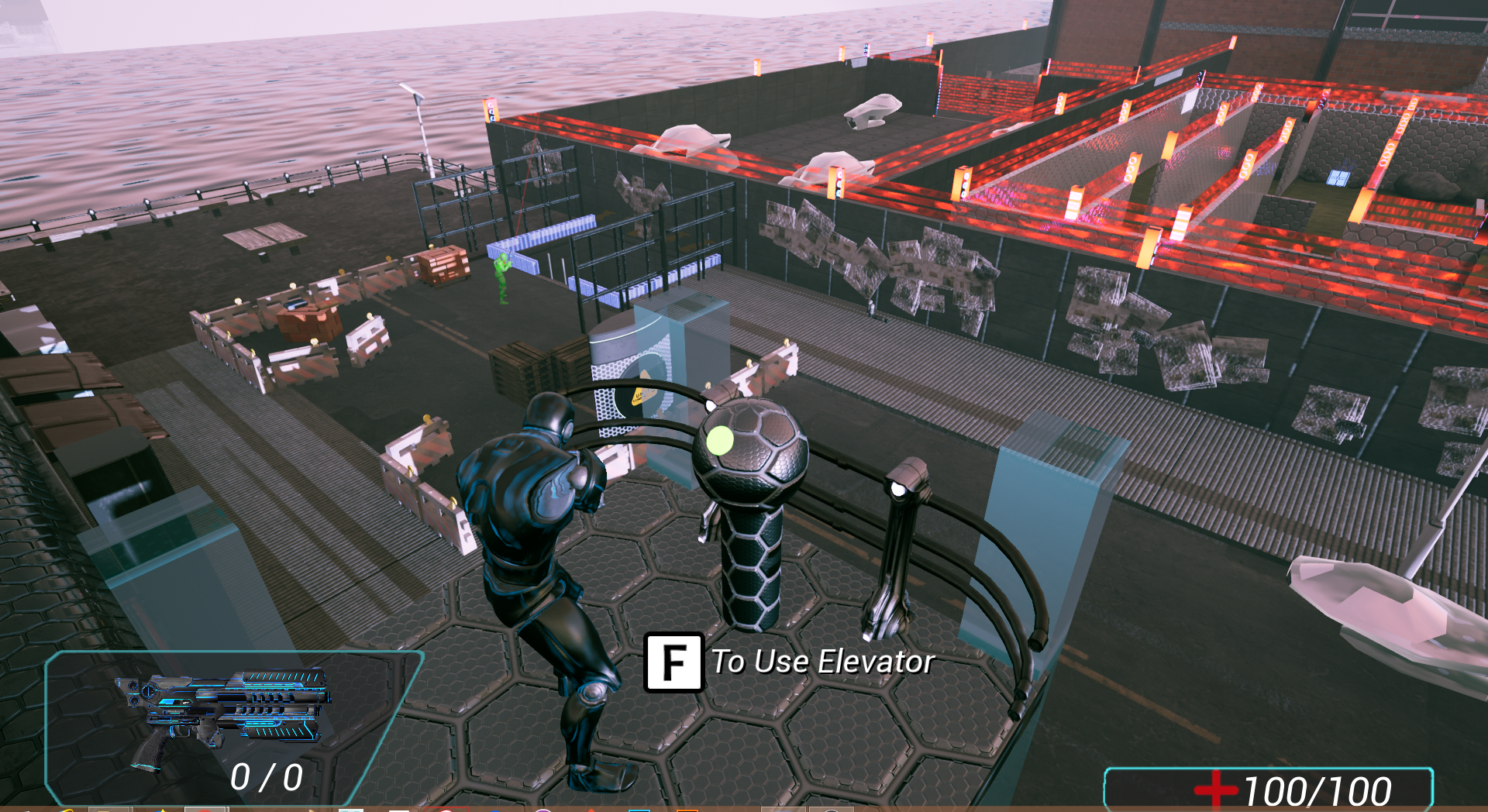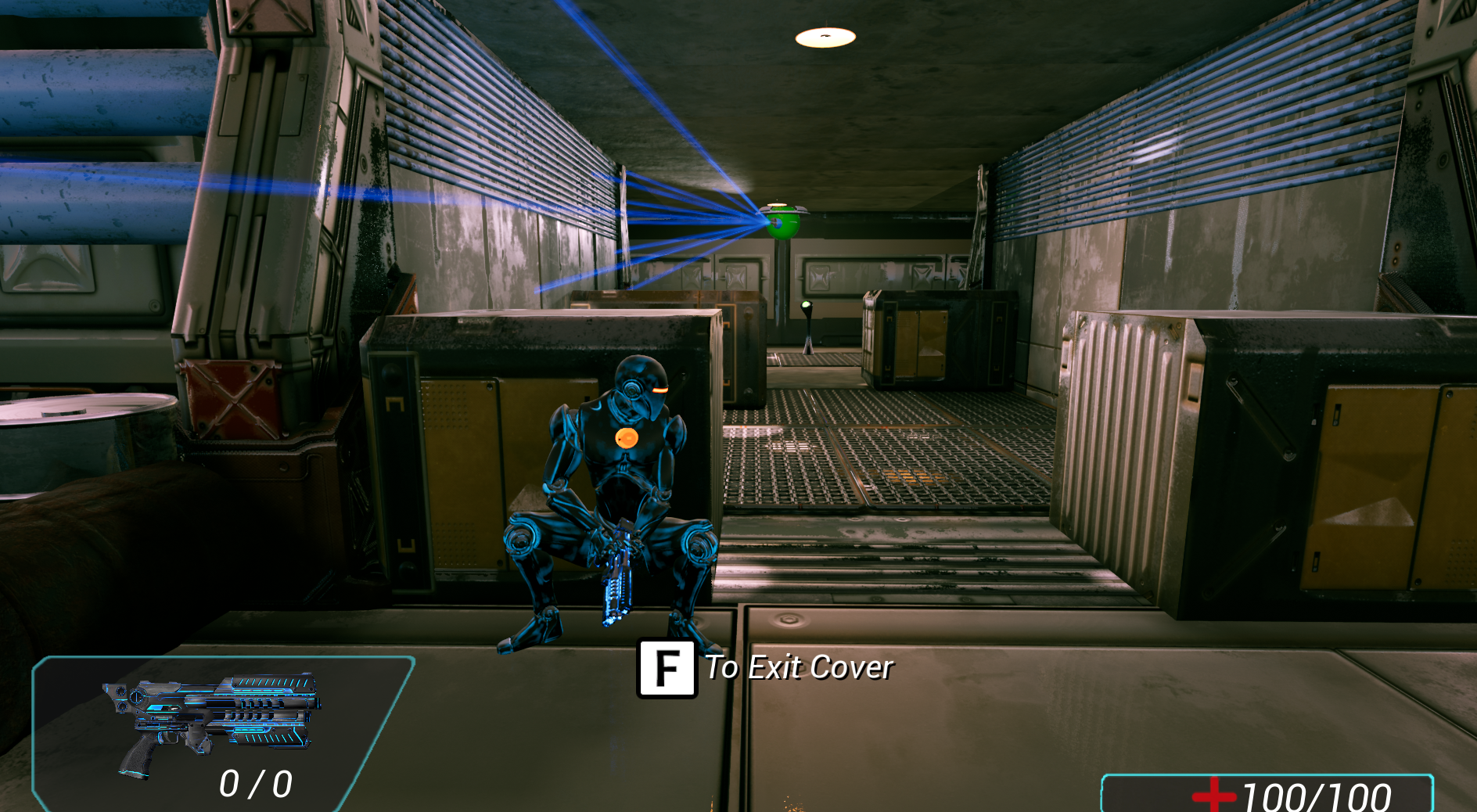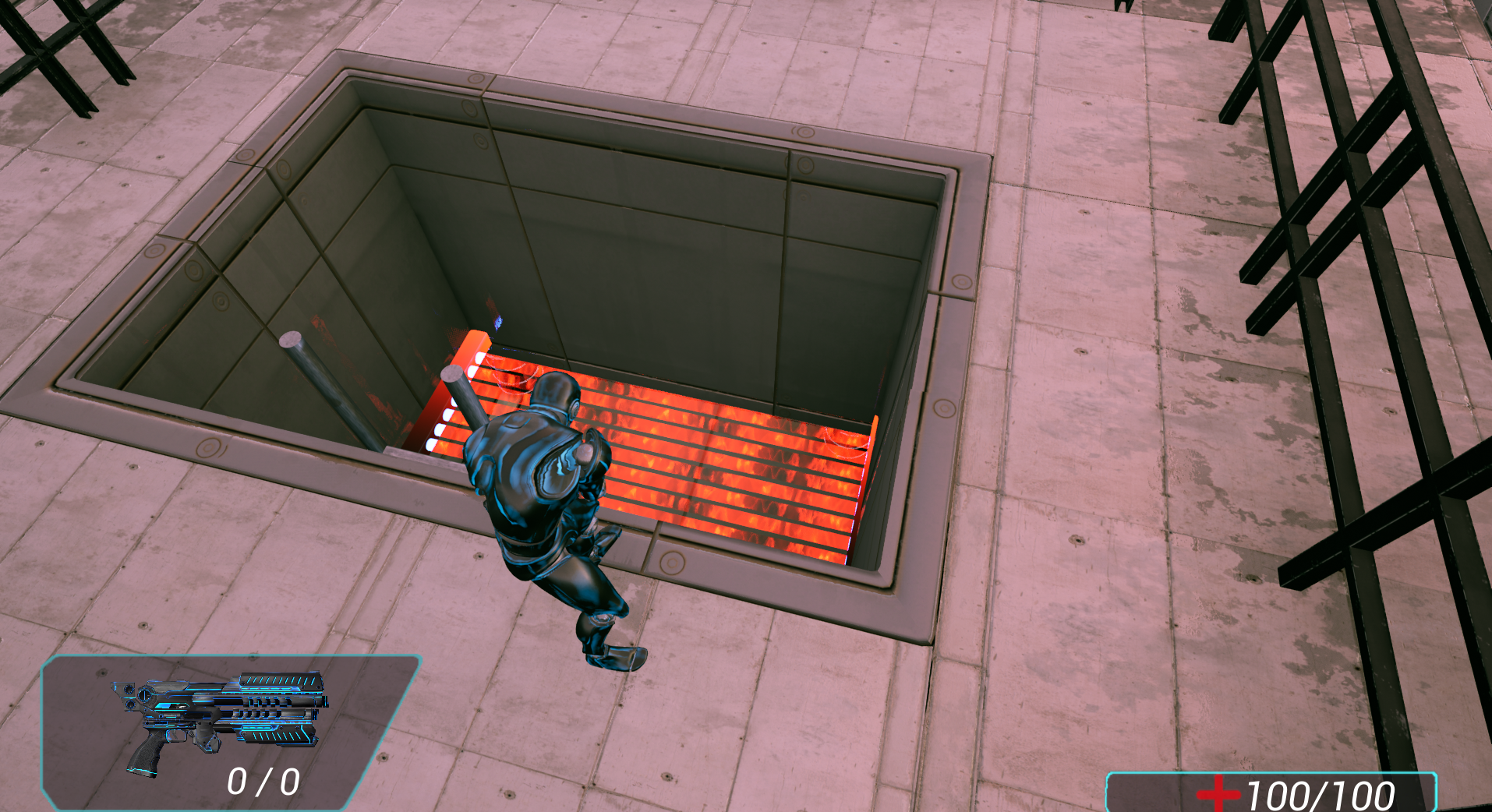LEVEL DESIGN / INDIVIDUAL WORK
Robo Avenger
Play Time: ~6 minutes 35 seconds
Development Time: 1 month
Team Size: 1
Software: Unreal Engine 4.22, Maya
Robo Avenger is a Single Player 3rd Person Shooter/Platformer level built with UnrealEngine4. This level tries to create the gameplay loop of 3rd Person Action Adventure genres like Tomb Raider, Uncharted, or God of War. Heavily emphasizing sections dedicated to a design pillar like stealth.
Objectives:
Infiltrate corporate building.
Locate the Boss.
Kill him for killing your robo brother.
Gameplay highlights: Puzzle Platforming, Stealth.
Table Of Contents
Process
Top Down
Station
Maintenance Tunnel
Abandoned Building
Courtyard
Scripts
Full Video Playthrough
(includes block out and final version)
Download
PC Link
(To select the level from the level select menu, click on Demo Level)
Process
Top Down
A paper sketch of the level’s Top Down.
A cleaned up Top Down and Flow Chart that depicts the level layout and game flow when I first started. (Can click to enlarge gif).
Final Top Down Flow Chart


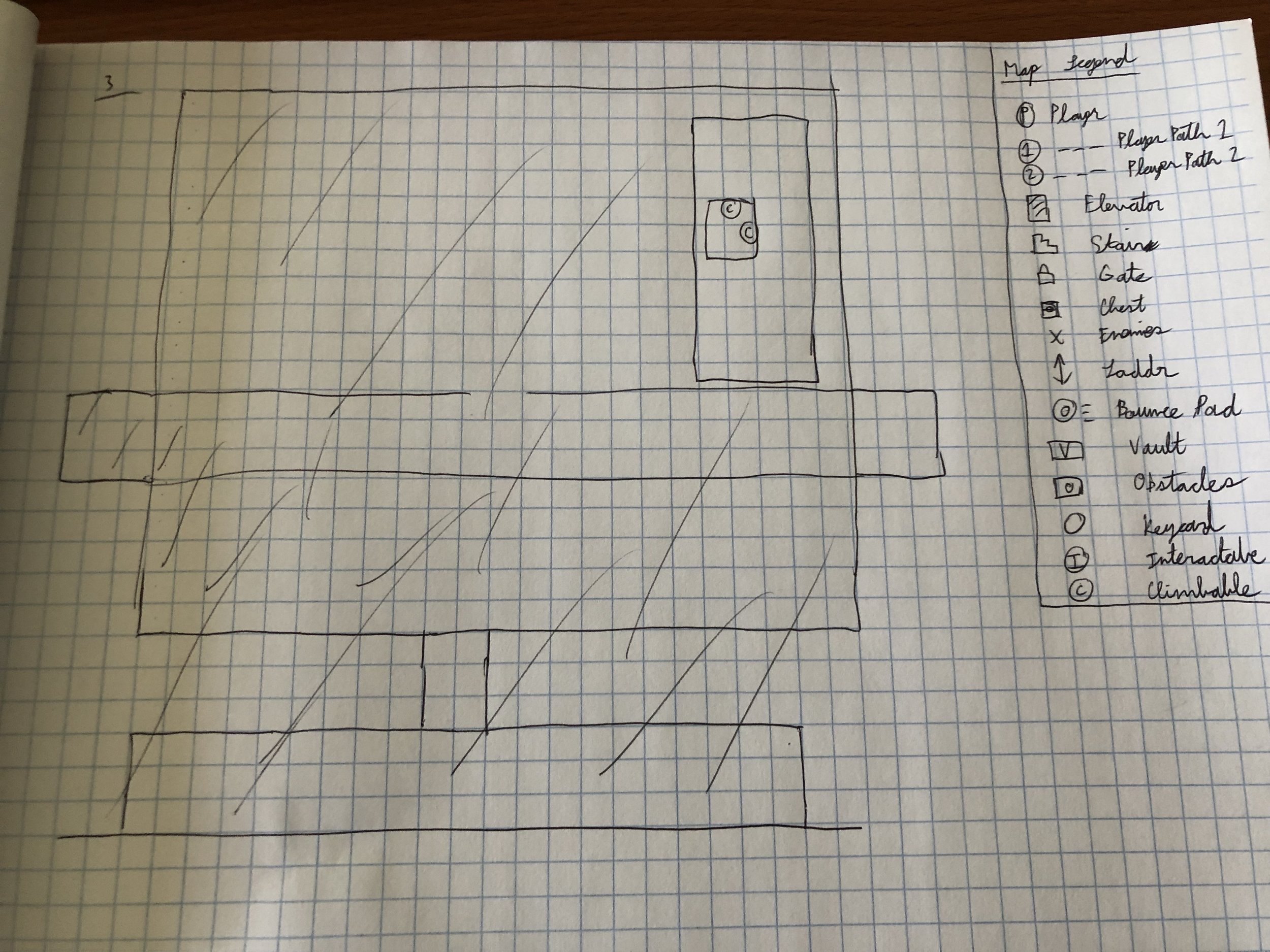
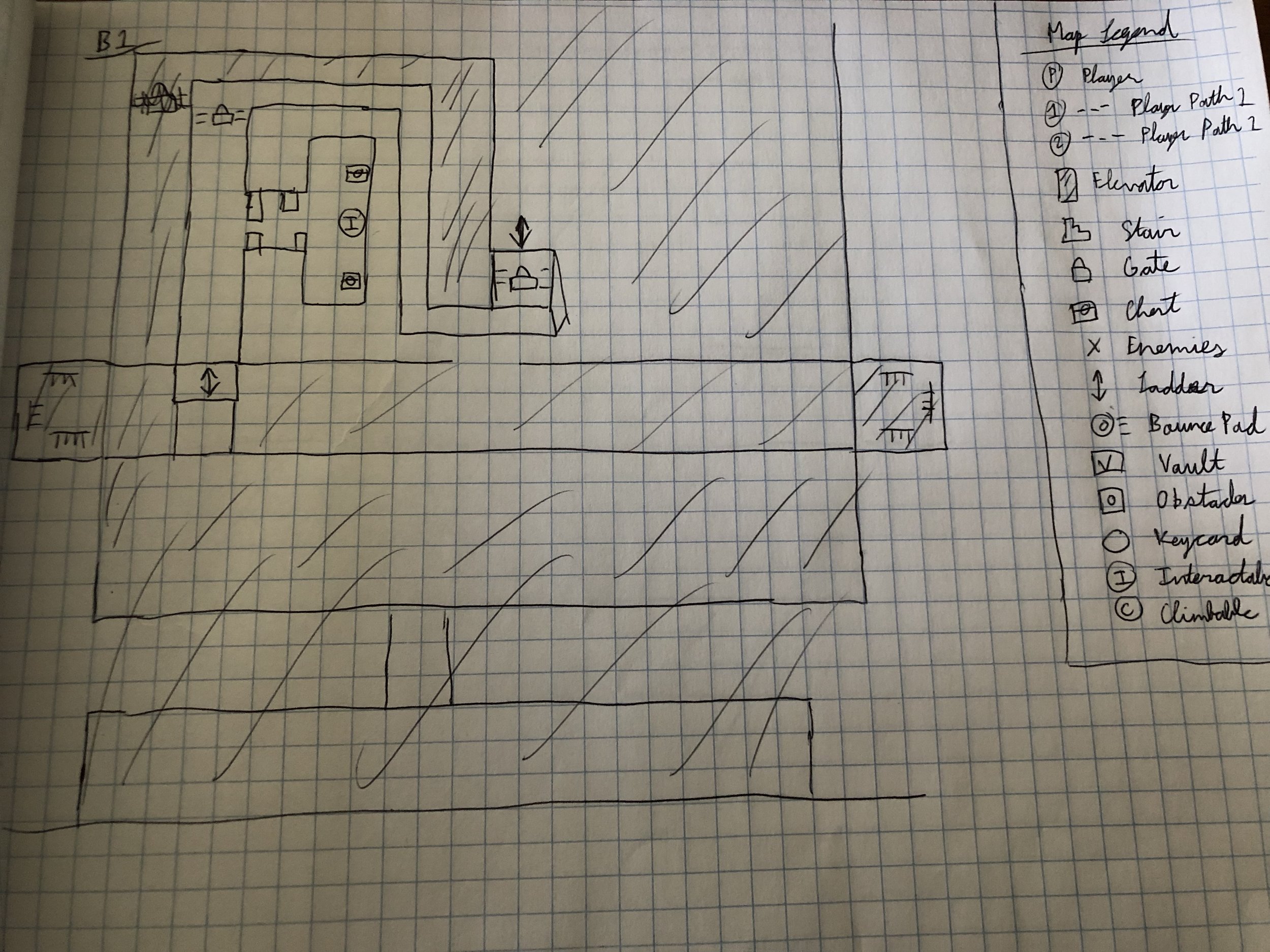
A cleaned up Top Down and Flow Chart that depicts the final level layout and game flow. (Can click to enlarge gif).
Station
Design Process
The design goals during 0:00-1:10 and 3:07-3:50 in the top videos respectively was to show the player their goal, their approach options, and contextualize their setting.
I started the player at the bottom of the stairs, so the Complex would be slowly revealed, letting the player know their destination. The water and area behind the player were meant to convey a train station by the docks.
Next, I wanted to show two different approach options with the Maintenance Tunnel and the Abandoned Building. To do this, I put a laser gate at street level to let the player know they can’t move through there. Both at street and platform level, I used various construction objects, papers, and symbols to direct players to their available paths. To reinforce the start of the path to its end, I used a pulsating blue hexagonal railing to surround both the entrance and exit.
Post Reflection
I will say that this section of the level is the least contextualized as a train station. The elevator down to the street doesn't quite make sense and the bounce pad was intended to be a broken elevator with a faulty force pulsator, which powered the elevator.
To fix these design issues, I would make the entire 2nd floor deck an observation deck with two elevators that take the player to a street level market underneath it with a corridor to the street. Secondly, the bounce pads could be on the deck for commercial testing next to an electronic advertisement. It narratively shows that these portable bounce pads are a widely used product of the evil corporation. The advertisement can then mention that one of the bounce pads is defective and is leaned against a pillar facing the Abandoned Building, which opens it up to launch the player towards it.
These redesigns make the elevator more diegetic to the world if it leads to a street market. It also allows players to test out the bounce pad and learn its function from samples, which helps to make the connection that the "defective" bounce pad can launch the player onto Path B.
Click to enlarge images
Maintenance Tunnel
Design Process
For the Maintenance Tunnel section, 1:09-2:30, I wanted to have them utilize stealth mechanics to reach the end.
For instance, I used an electric gate to block the player’s path, and I created a small path and room to the right of the main hall with the deactivation panel. To encourage the player to take cover behind containers in that side hallway, I put a turret in that room and had the player start with no ammo. I used lighting, the turret’s targeting laser, and placed cover at the start of the side hallway to indicate there was another path and prevent the player from being immediately targeted by the turret.
After deactivating the gate, I extended the back wall as well as used pipes, wires, and a locked door to direct attention to the crawl space to the right. I placed a light ray to ground the space as underneath the Courtyard and fire traps (broken gas pipes) to engage the player and get them to slowly move through the crawl space. While slowly moving, the player will overhear two robo guards from above give a preview of the next section since the player can’t see the it.
Once on the other side, the player must climb a ladder upstairs. The laser gate for the ladder section was meant to stop the player from coming down the tunnel if they took the Abandoned Building path. It was also lowered to the bottom of the ladder because I found that it's more likely for the player to not look up before climbing than not look down before dropping down.
Post Reflection
The biggest function over form design I made here would be my putting the deactivation button for the electric gate on the side the player comes from. As well as it being in an empty room guarded by a turret.
I would redesign this to have the button on the other side of the electric gate. The hallway to the right would lead to a break room hence the seat with the pizza. However, that room could have a crouch space that they can climb up to enter, which puts them on the other side of the gate and button. Then the next crouch space with the fire traps onwards would be the same, which they now know how to navigate.
Click to enlarge images
Abandoned Building
Design Process
For the Abandoned Building, 3:49-5:59, my goal was to get the player to the outside of the building, which led me to play with verticality and movement mechanics in this area.
It was originally only 2 floors, the 2nd floor and the roof. However, after playing both paths, I found that I needed to add more gameplay time for this path, so I added a 1st floor. I used fallen over cabinets and debris to let the player vault and crouch through obstacles as well as funnel them down to the 1st floor. If the player explored the stair case area, I rewarded them with a chest. I used yellow railing to indicate a climbable ledge that they could use to get up to the 2nd floor and then the roof. I chose to use these movement mechanics since this was an area with a lot of debris and no electronics, which meant relying on physical prowess.
Once on the roof, I used the scaffolding to focus the view to the front and prevented the player from jumping off the building in ways that would break the level. I also chose to have them come from the roof because it gives them a vantage point preview of the next section.
Post Reflection
Out of all the areas of my level, the Abandoned Building makes the most diegetic sense in this world. I would actually keep everything the way I designed.
Click to enlarge images
Courtyard
Design Process
The Courtyard section, 6:14-9:19, is meant for the player to stealthily traverse while avoiding the gaze of the guards. It tests and reteaches the cover and the crouch mechanic, which had been previously learned in either paths. At the end the player can kill the guard with the keycard and take it back to the locked door to open it and enter the Complex.
To guide players and reward them for exploring dead end paths, I put chests there for them. I also use smear decals and rocks as bread crumbs to guide players along the path. To make the final puzzle of this level, I visually scripted the logic for the keycard, locked door, and the guard dropping the keycard. Additionally, to prevent players from simply jumping over the walls, I put a laser fence that would prevent players from jumping on covers to get over the walls. I did the same for the walls facing the street. I opted for this option since this is supposed to be a secure compound so having basic security measures isn’t out of the ordinary.
Post Reflection
The garden maze operates as it was designed. Although, there may be some issues with seeing enemies around corners and reacting to them. A redesign may be to make each layer of the maze a level lower, so the center of the maze is the lowest point. This way players get the added benefit of seeing the enemies from a vantage point each time they move closer to the center. In doing so, it provides players with more time to react without elongating corridors and enlarging the space.
Click to enlarge images
Scripts
Custom script that requires a key card to activate a door. Logic also includes an enemy AI dropping the key card when killed.
This code is is meant to allow any designer the ability to provide the references for the keycard, the locked door, and the enemy that would drop the keycard upon his death. This allows this system to be used multiple times and makes it not level specific.

